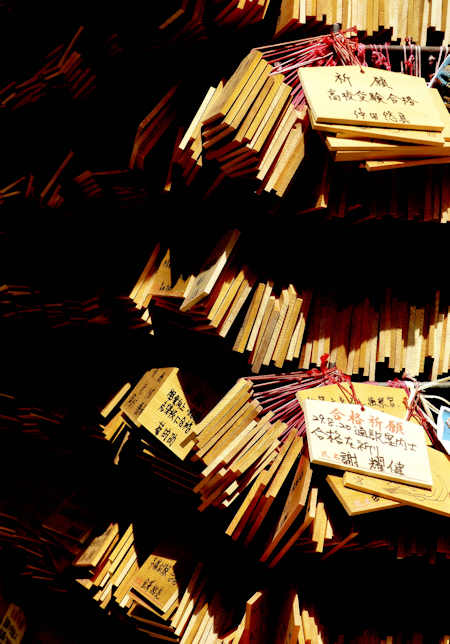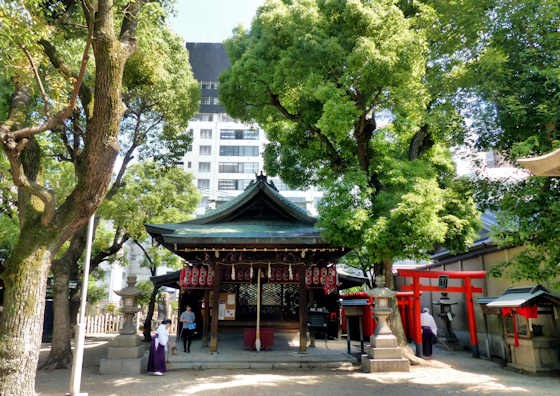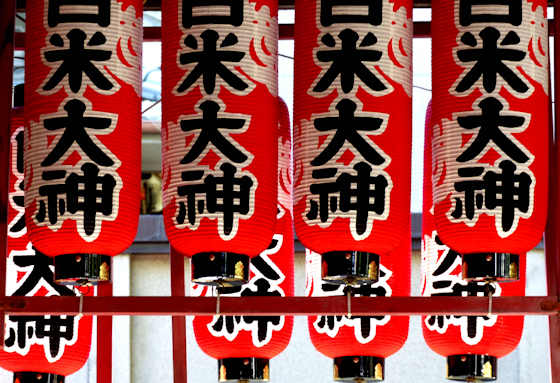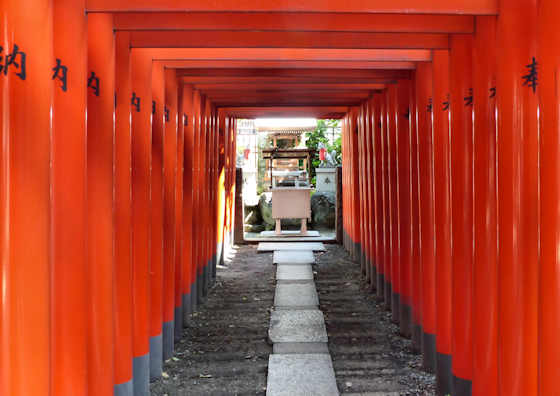Nishinomiya Ebisu Shrine is certainly the most popular and well-known shrine in the city of Nishinomiya in Hyogo.
Nishinomiya means "West Shrine" and the shrine the city is named after is actually Hirota Shrine.
To the north of Nishinomiya Ebisu, Hirota Shrine was in ancient times a very important shrine, and it is believed that the Ebisu Shrine was sometimes referred to as "Southern Shrine" indicating its branch relationship to Hirota.
There are three hondens behind the main shrine. One enshrines Ebisu, one enshrines Amaterasu and Okuninushi, and the third enshrines Susano.
The enshrinement of Amaterasu and Okuninushi occurred in the early years of Meiji when the shrine officially separated from Hirota. Not sure when the Susano enshrinement happened.
There seems to have been some dispute over the Okuninushi Shrine. It seems at one point the whole shrine was renamed Okuninushi Shrine but then later separated from the Ebisu Shrine. After 1945 the Okuninushi became a sub-shrine of the Ebisu.
The main hall is a post-war reconstruction of the 17th century building. I also believe it underwent further reairs following the Hanshin Earthquake.
There are numerous secondary shrines within the large grounds, including the aforementioned Okuninushi Nishi Shrine which also enshrines Sukunahiko, and a Kojin Shrine (photo 4 )
There is also an Atago Shrine, and an Okiebisu shrine, enshrining the "wild/turbulent" aspect of Ebisu relocated to within the grounds in early Meiji. (second to last photo)
There is a Benzaiten Shrine and a Rokkosan Shrine, an Inari Shrine, but also an Ugatama Shrine from before Meiji when Inari became equated with Ugatama. There are two shrines connected to sake brewing, a Matsuo Shrine, and an Umemiya Shrine.
The most interesting subsidiary shrine for me was the Hyakudayu Shrine which enshrines a kami connected to puppeteering. It is said that one of the reasons for the widespread adoption of Ebisu nationwide was due to Ebisu stories told in puppet plays.
Nishinomiys Ebisu is considered by some to be the head shrine of all Ebisu shrines nationwide, and the version of Ebisu here is the one based on Hiruko, sometimes called "Leech Child" born of Izanagi and Izanami who failed to follow the correct protocol and so their first child was born without limbs or skeleton. It was placed in a basket and set adrift.
One version of the story has the basket sailing to Hokkaido where the child is raised by Ainu. Another version of Ebisu is equated with Kotoshirunushi, a son of Okuninushi, and so some consider his main shrine of Miho Shrine in Shimane to be the head Ebisu shrine.
Certainly the pairing of Ebisu and Daikoku, another variation of Okuninushi, as two of the Seven Lucky Gods, explains Ebisu's popularity among businesses and commerce, whereas Ebisu as the patron deity of fishermen suggests a different heritage perhaps.
The Toka Ebisu Festival takes place on January 10th and includes the Lucky Man Race wherein thousands of hopefuls race from the main gate to the main shrine building.
I was here very early on June 10th and preparations were underway for a ceremony at the Okiebisu Shrine.....
This was my first stop on day 3 of my walk along the Kinki Fudo Myo pilgrimage. The previous post was on my last stop of day 2, the
Kifune Shrine in Amagasaki.


























































